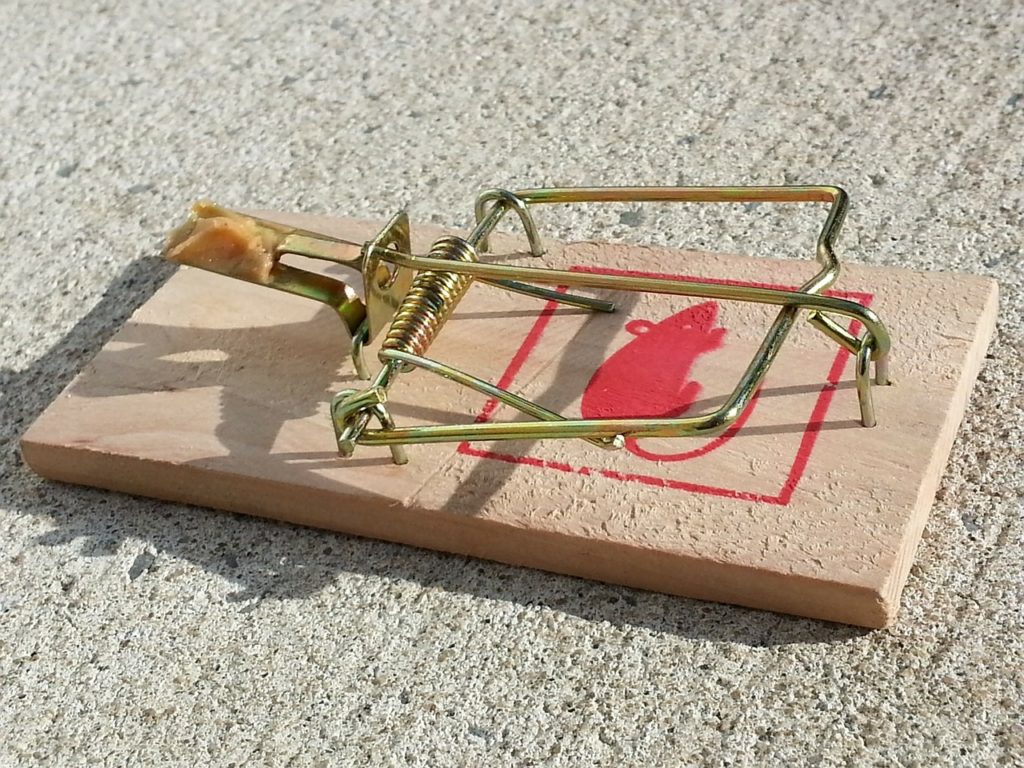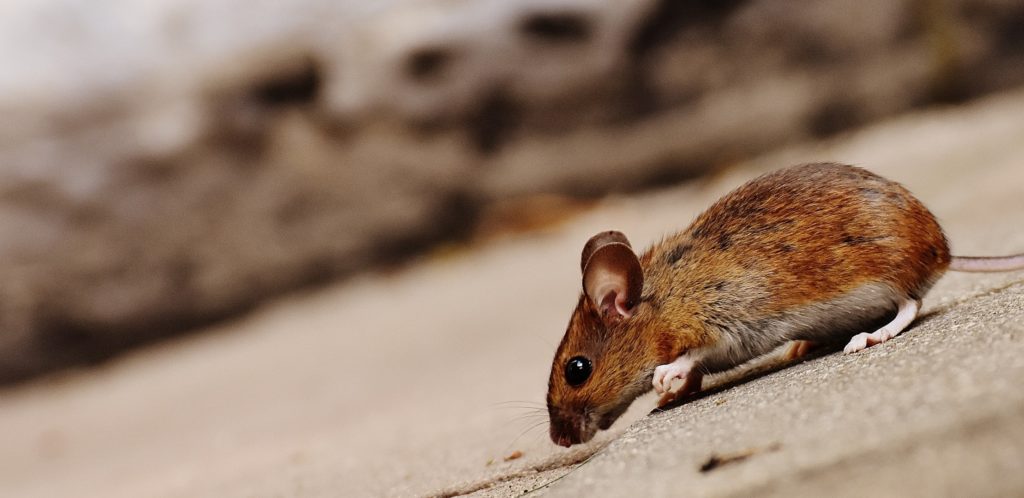How To Get Rid Of Mice In Your Home
The Best Ways To Get Rid of Mice: A Complete Guide
Discovering a rodent in your home can be stressful. One moment you’re watching TV and the next you’re standing on the couch screaming at an unwanted, furry guest. While rodents in the house may not sound like a very big deal in some circumstances, they do pose health risks, especially for children, the elderly, and pets. Getting rid of mice does not necessarily warrant an expensive call to a pest control service — oftentimes you can deal with it on your own. If all else fails, calling a professional pest control service is a good option. Even though Aftermath doesn’t perform pest extermination, we do recommend full-scale disinfection service following any severe rodent infestation. We know sanitation best-practices and put together this DIY pest control guide to help you out!
Eliminate Rodent Entry Points Into The Home
One of the best ways to control rodents in the home is to make it difficult for them to gain entry in the first place. Mice can squeeze through holes the size of a dime, so this can be challenging. Concrete and caulk are the most reliable ways of keeping rodents out, but copper, aluminum mesh or steel wool can be used in places where more flexibility is required.
- Plug or repair all cracks and gaps in foundation, walls, basements, etc.
- Seal gaps and cracks around doors and window frames.
- Caulk holes around pipes that lead to appliances.
- Check that seals around all exterior lines (TV, cable, electrical) leading through walls are tight.
Clean Up Food And Trash
In addition to shelter, rodents need easy access to food. Although eliminating garbage and food waste is one of the best ways to avoid a potential infestation, it will not resolve an active one. Keep your home clear of trash both inside and out and follow this simple cleaning routine:
- Clean common areas daily where crumbs may gather: under stoves, fridges, and around cabinets and trash bins.
- Sanitize and disinfect counters after food prep.
- Store pet food and bird seed in airtight containers.
- Put away uneaten food at night when mice are most active.
- Dispose of food waste immediately and use garbage cans with secure lids inside and outside of the home.
Keeping outdoor areas clear can also prevent pests. Regularly mowing the lawn, trimming bushes and other landscape upkeep can prevent hiding spots/nests from developing. Be sure to remove debris in your yard such as old lawn furniture, broken equipment, unused planters, and other items wherein rodents can nest. Store firewood and other materials off the ground to limit access.
Types Of Mouse Traps For Home Use
Even if you keep a tidy home, you may still find mice from time to time. Luckily the average mouse can be dealt with using commercially available mouse traps purchased from your local hardware store.
Note: although poison is an effective way to kill mice, it isn’t always a healthy or safe option especially if pets or children are present. Additionally, while poison will kill the rodent(s), you will still need to find and dispose of the remains. If it crawls into a hard-to-reach nook or inside a wall, it will die there and rot. For these reasons, we will only cover non-poisonous mouse traps.
Most mouse traps fall into one of four categories, each with their own distinct benefits. Electric and Ultrasonic traps are also available, but these have debatable effectiveness and are less popular, so will not be covered here. The four basic types of mouse traps are:
- Snap Traps – This is the trap we most often picture when we hear the phrase “mouse trap”. These traps are cheap and readily available. The downside is that some of the less expensive models can be tricky to set up, resulting in some sore fingers. They also require contact with the deceased mouse and must be disposed of after one use. Newer, plastic snap traps are less messy and can be reused.
- Enclosed Snap Traps – These traps eliminate the messiness of the traditional mouse trap, but most models are not reusable, meaning that it may be expensive if you have more than just a few mice.
- Glue Trap – Like the snap trap, glue traps are readily available and relatively inexpensive. However, they are widely considered to be inhumane. Larger mice may be able to free themselves while smaller mice die of starvation instead of from the trap itself. Glue traps are generally not recommended.
- Humane/Live Trap – Live traps work similarly to enclosed traps but are infinitely reusable. They capture the mice alive and then you transport and release them far from your home.
How To Place Mouse Traps Effectively
No matter what type of trap you choose, the best places to set them up are where mice are the most active. This includes attics and basements, in cabinets and behind furniture or appliances. Place the traps along walls where mice are most likely to travel. The bait side should be facing the wall, which will tempt the mouse to investigate the trap instead of going around it. If you believe the infestation is significant, set traps in pairs with no more than 2-3 feet between them. In highly trafficked areas, consider placing more traps just inches apart.
Finally, there is no recommended number of mouse traps since each situation is different. Just remember that the more traps you set, the more mice you will eliminate.
Best Bait For Mouse Traps
Contrary to childhood stories and cartoons, cheese isn’t the best bait for most mouse traps. This is because the odor isn’t strong or appealing enough to attract the mouse if there are other easily available food sources in your home. Most mice are nut and seed eaters by nature, so instead of cheese, experts suggest oily, aromatic food such as peanut butter.
Another benefit to using peanut butter is that its viscous nature makes it challenging for the mouse to snatch-and-grab it from the trap. Be sure to use just a pea-sized amount, however. This is just enough that the mouse will be tempted to nibble, but small enough that they cannot carry the bait away.
When placing bait in the trap, use gloves to avoid contaminating it with your scent, which might scare them away. Dishwashing gloves or standard sanitary gloves are fine for this task. Gloves should also be used when reloading traps and disposing of any mice you catch.
Best Mouse Repellent
So if you’ve managed to chase off or eliminate your tiny invaders, how do you keep them away? Besides making your home a less attractive place to take up residence, there are some natural deterrents that help keep mice at bay. Strong natural odors like mint plants, moth balls, or cotton balls soaked in peppermint and strong hot spices (eg. cayenne or tabasco sauce) can repulse mice.
Another remedy is to use a mouse’s natural predators to discourage them from entering your home. The natural smell of cats or ferrets can prevent mice from taking an interest in your home, but this method isn’t 100% foolproof, nor is it advisable to keep a pet simply for the sake of pest control.
Aftermath is much more than a cleaning service – we are the nation’s industry leader in professional biohazard cleanup; we tackle a wide range of difficult cleanup situations, from crime scene cleaning to hoarding cleanup. Though mice are a common problem and can usually be managed on your own, serious infestations should be handled by a professional pest control service.
Though Aftermath does not offer pest extermination services, we do recommend a full-scale disinfection service following any severe rodent infestation. Professional cleaning provides peace of mind regarding the health and safety of your family. Mice and rats can transmit serious diseases such as Hantavirus and Salmonella, both of which may lead to severe illness and even death. Our trained team of biohazard cleanup technicians are able to eliminate these and other dangerous bacteria and viruses that may be present in your home. If you’ve experienced a significant mouse infestation, consider giving us a call today for a no-obligation estimate.
 877-872-4339
877-872-4339  Contact Us
Contact Us 







